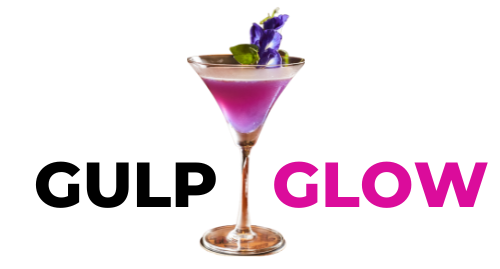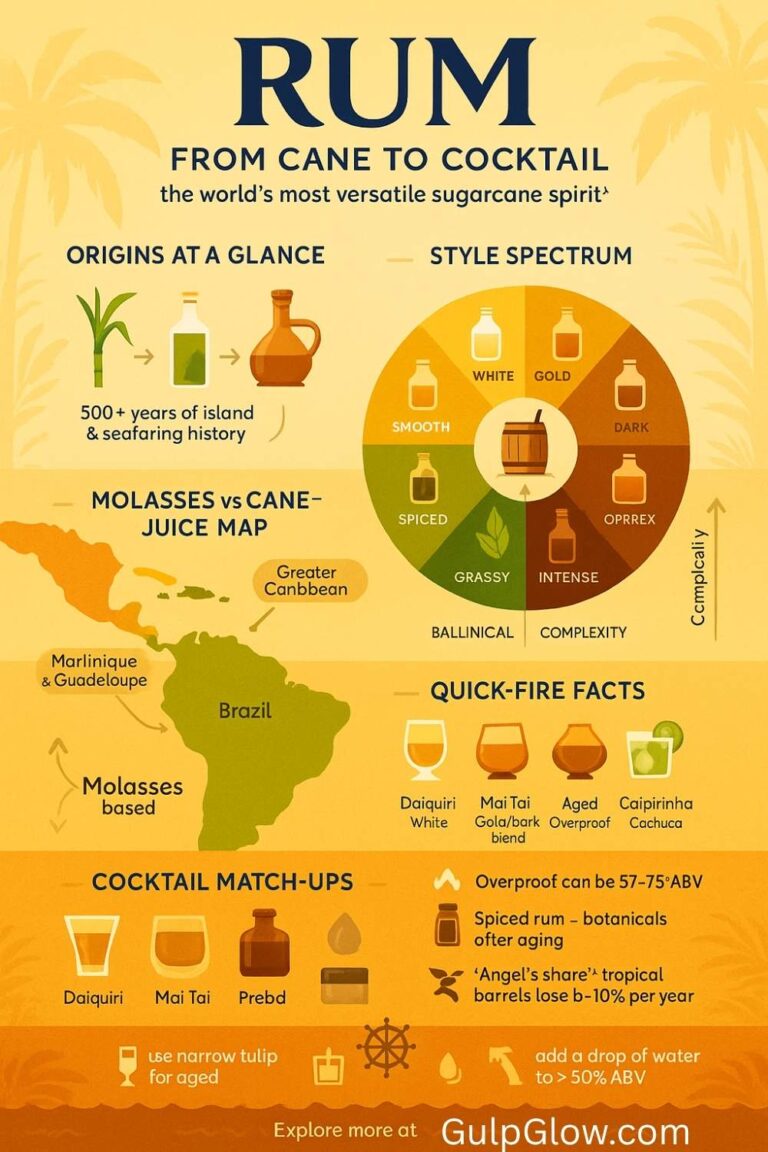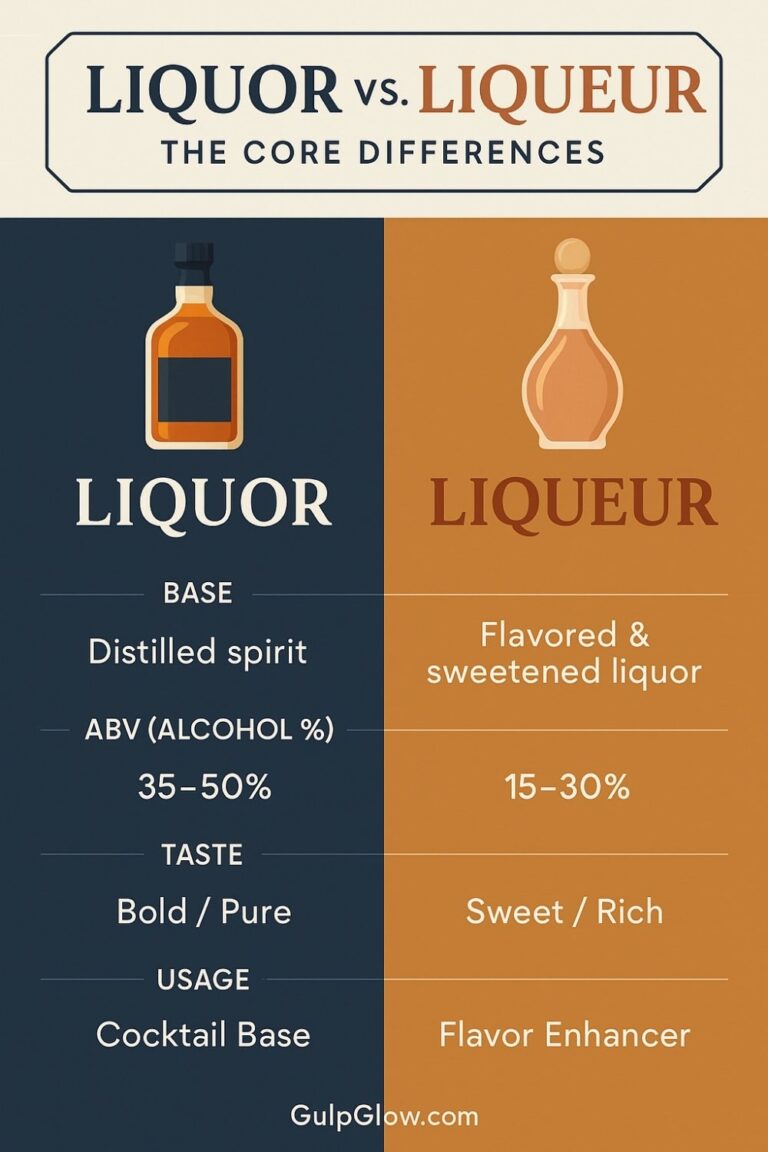What Is Vodka Made From? A Quick Guide to Styles & Sources
Vodka may be known as the ultimate neutral spirit—crystal-clear, almost flavorless, and endlessly versatile—but its roots and composition tell a far richer story. From the frosty fields of Eastern Europe to ultra-modern craft distilleries, vodka’s base ingredients and production methods shape subtle, yet meaningful, differences in character and style.

While traditionally made from grains or potatoes, vodka today can be distilled from an astonishing variety of sources: corn, grapes, sugar beets, whey, even maple sap. These raw materials not only meet regulatory definitions across different regions but also impart unique textures, aromas, and flavor notes—however faint—when handled by skilled distillers.
In this comprehensive guide, we’ll explore what vodka is truly made from, how those ingredients affect its quality and taste, and how regulations across the globe influence what ends up in your glass. Whether you’re sipping neat or mixing a martini, understanding the essence of vodka begins with its base.
Defining Vodka: What Exactly Is It?
Before diving into what vodka is made from, it’s important to understand what vodka actually is—not just in terms of popular perception, but also from a legal and technical standpoint.
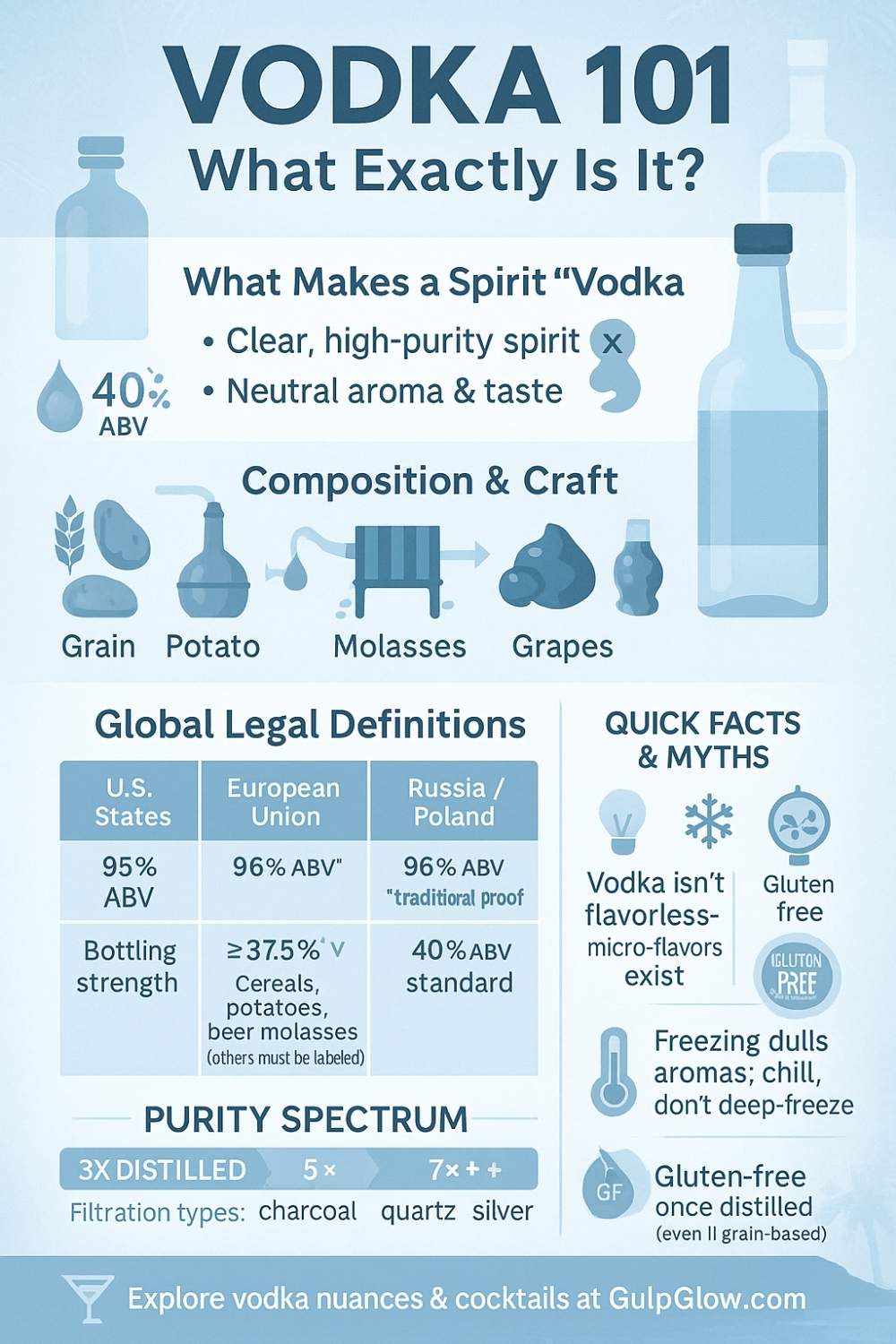
What Makes a Spirit “Vodka”?
Vodka is a clear, distilled alcoholic beverage that is typically known for its high purity, neutral taste, and smooth finish. It usually contains 35% to 50% alcohol by volume (ABV), though the standard in most markets is around 40%.
Despite its reputation for neutrality, vodka is more than just alcohol and water. Its character is subtly influenced by the raw materials used in fermentation, as well as the number of times it’s distilled and how it’s filtered.
Vodka’s Legal Definition Around the World
The definition of vodka varies depending on where it’s made:
- United States: According to the Alcohol and Tobacco Tax and Trade Bureau (TTB), vodka is “neutral spirits without distinctive character, aroma, taste or color” and must be distilled to at least 95% ABV, then diluted to bottling strength (usually 40% ABV). Any agricultural material can be used as the base.
- European Union: Vodka must be made from cereals, potatoes, or sugar beet molasses, distilled to a minimum of 96% ABV, and bottled at no less than 37.5% ABV. If non-traditional bases (like fruits) are used, the label must declare it—for example, “vodka produced from grapes.”
- Russia & Poland: These countries have their own historical standards, often emphasizing traditional ingredients like rye or potatoes and distillation techniques passed down for generations.
Understanding these definitions gives us a foundation to explore the wide range of ingredients that fall under the umbrella of “vodka.”
Traditional Base Ingredients: Grains & Potatoes
For centuries, vodka was crafted using simple, locally available agricultural products. The most historically rooted of these are grains and potatoes—both still widely used today.
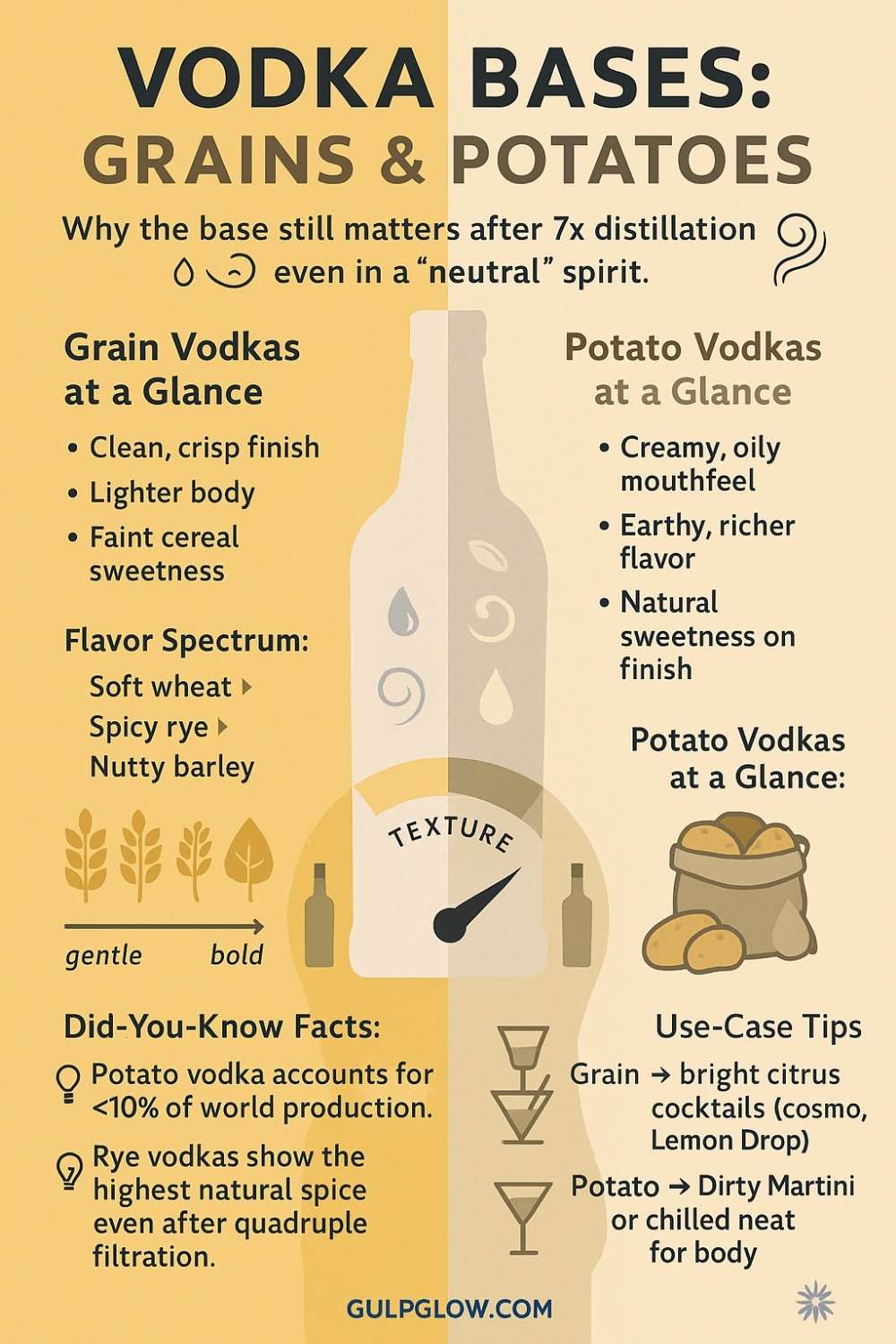
Grain-Based Vodkas: Clean and Crisp
Grains are the most common base for vodka worldwide, and each type imparts subtle differences in flavor and mouthfeel.
Popular Grains Used in Vodka
| Grain | Flavor Notes | Common Examples |
|---|---|---|
| Wheat | Soft, sweet, citrusy | Absolut, Grey Goose |
| Rye | Spicy, peppery, dry | Belvedere, Żubrówka |
| Barley | Malty, nutty, smooth | Finlandia, Hammer + Sickle |
| Corn | Mildly sweet, creamy | Tito’s Handmade Vodka |
- Wheat vodkas are often described as smooth and slightly sweet, with a gentle lemon-zest edge.
- Rye vodkas are spicier and more robust, often favored by those who enjoy bolder drinks.
- Corn vodkas have a light sweetness and tend to be very neutral—great for cocktails.
Grain-based vodkas typically go through multiple distillations and filtration processes, resulting in a clean, bright finish.
Potato Vodkas: Rich and Creamy
Potato vodka is beloved for its fuller body and velvety texture. It generally has a more robust, earthy flavor than grain-based varieties and tends to feel heavier on the palate.
What Makes Potato Vodka Unique?
- Texture: Creamier and slightly oily mouthfeel.
- Flavor: Earthy, rich, occasionally slightly sweet.
- Use Case: Excellent for sipping neat or in simple cocktails that let the spirit shine.
Notable potato vodkas include Luksusowa (Poland) and Chopin Potato Vodka, both known for maintaining depth and smoothness with minimal filtration.
Although potato vodka comprises a small portion of the global market, it holds a special place among connoisseurs for its complexity.
Unconventional & Emerging Bases: Thinking Outside the Grain
Modern distillers have been pushing boundaries, proving that vodka can be made from almost any fermentable material. These alternative bases are giving vodka a fresh identity—especially in the world of craft spirits.

Fruits and Vegetables
Fruits like grapes, apples, and even carrots have been used to produce distinctive vodkas:
- Grapes: Used in premium brands like Cîroc (France), grape vodkas are often soft and aromatic with fruity undertones.
- Apples and Pears: More common in artisanal distilleries, these impart a subtle fruitiness.
These vodkas tend to have higher glycerol content, which adds smoothness and a silky finish.
Molasses and Sugar Beets
Molasses-based vodkas are common in regions where sugar production is prominent. While often inexpensive to produce, they can yield surprisingly complex spirits when distilled skillfully.
- Sugar Beets: An EU-approved traditional base. Imparts a very mild sweetness with a clean profile.
- Molasses: Provides a faintly rich and warm undertone when not over-distilled.
Dairy and Other Left-Field Ingredients
Innovative distillers have explored:
- Whey Vodka: A byproduct of cheese-making; known for its creamy texture (e.g., Black Cow Vodka).
- Honey Vodka: Offers subtle floral notes with a gentle sweetness.
- Maple Sap Vodka: Distilled from maple tree sap—unique, soft, and slightly sweet.
These non-traditional bases not only make use of sustainable or local resources but also appeal to niche markets looking for something truly different.
Production Process & Flavor Influence
While vodka is widely regarded as a “neutral” spirit, the production process has a profound effect on its purity, texture, and—believe it or not—flavor. Even when distilled to high alcohol levels, traces of the base material’s character can remain, especially in premium or craft expressions.
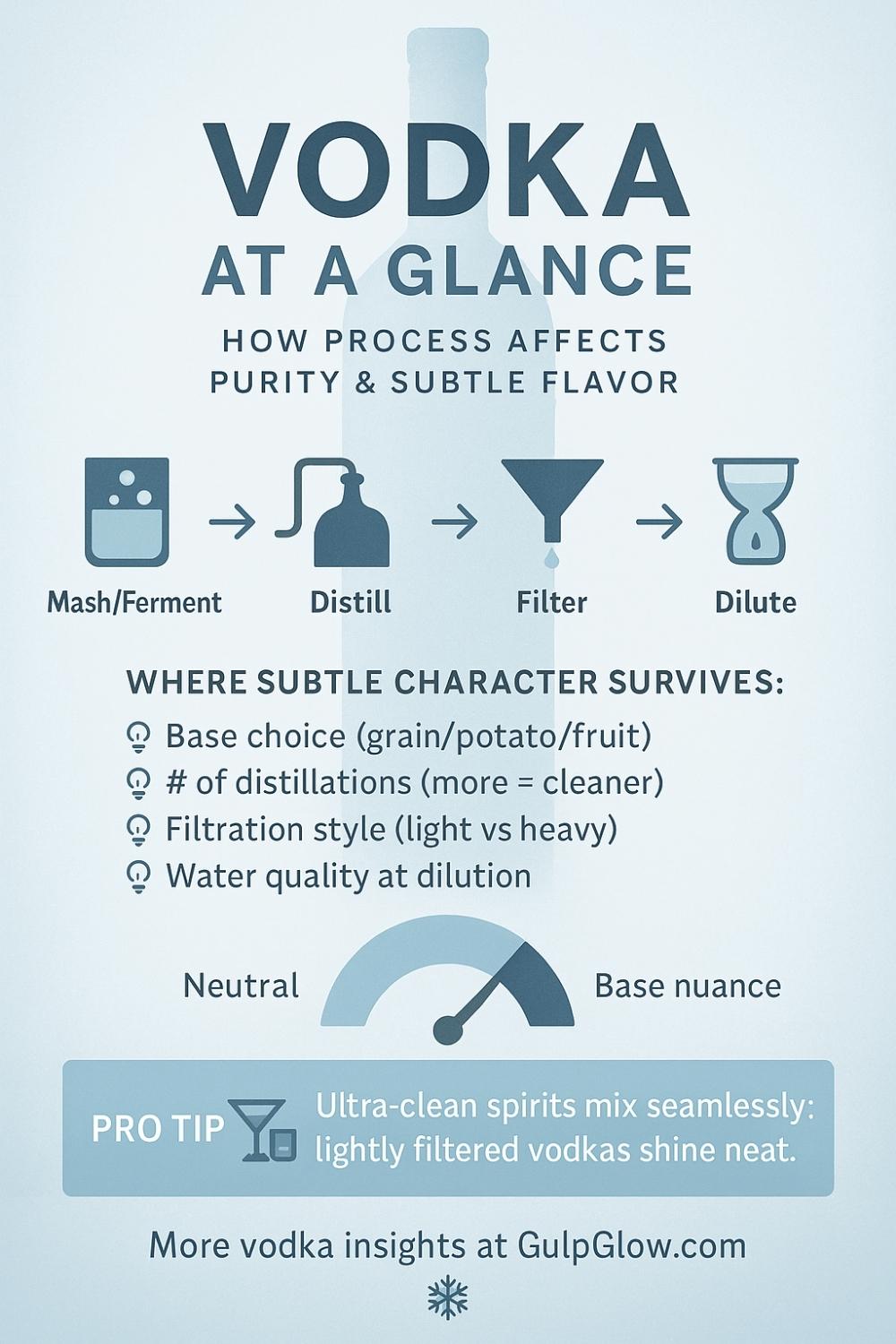
Step 1: Mashing & Fermentation
The process begins with breaking down starches or sugars in the base ingredient into fermentable sugars.
- Starch-rich bases (grains, potatoes) require enzymatic conversion during a mashing phase.
- Sugar-rich bases (grapes, honey, fruits) can skip mashing and go straight to fermentation.
Yeast is then added to convert sugars into alcohol. This is where some initial flavor elements—like glycerol (adds smoothness) and esters (add subtle aromas)—are developed.
Step 2: Distillation
Distillation is where the alcohol is separated from water and impurities. Vodka must be distilled to at least 95–96% ABV, which strips most flavor compounds. However:
- Multiple distillations can increase purity but may remove desirable traits.
- Fewer distillations allow more of the base character (especially in craft vodkas).
Column stills are most common for vodka, but pot stills are used in some artisanal brands to retain flavor complexity.
Step 3: Filtration
Once distilled, vodka is often filtered to remove remaining impurities. This is where production philosophies diverge:
- Heavy filtration (e.g., charcoal, quartz, diamond dust) yields ultra-clean spirits.
- Minimal filtration preserves character and mouthfeel—favored in high-end or traditional vodkas.
Some producers also use activated carbon or lava rocks to fine-tune the texture and taste.
Step 4: Dilution and Bottling
The final spirit is diluted with water—often from pristine local sources—down to the desired strength, typically 40% ABV.
- The quality of water used plays a surprisingly significant role. Many brands boast of glacier or spring water for smoother texture.
Flavor & Texture by Base Ingredient
Though vodka’s hallmark is its neutrality, the base ingredient subtly influences the finished product. Here’s a comparative look:
Vodka Flavor Profiles by Base
| Base Ingredient | Flavor & Texture Traits | Best Use Cases |
|---|---|---|
| Wheat | Soft, slightly sweet, lemony finish | Versatile in cocktails, neat |
| Rye | Spicy, peppery, grainy bite | Bold martinis, sipping spirits |
| Corn | Mild, creamy, sweet | Mules, spritzers, infusions |
| Barley | Nutty, malty, smooth | Sipping or old-school cocktails |
| Potato | Earthy, creamy, full-bodied | Best neat or over ice |
| Grapes | Fruity, smooth, glycerol-rich | Elegant cocktails, chilled shots |
| Molasses | Slightly caramel-like, warm | Flavored infusions |
| Whey | Buttery, silky, milky texture | Novelty sippers, smooth blends |
| Maple Sap | Sweet, mellow, woody | Sipping, dessert cocktails |
Why Texture Matters in Vodka
Texture is a major differentiator in premium vodka. Even when taste differences are subtle, the way vodka feels—silky, creamy, sharp, or oily—can dramatically change how enjoyable it is to sip or mix.
Craft distillers now highlight these textures as part of their branding, with many choosing not to “over-distill” to preserve unique mouthfeels.
Regulation & Labeling Nuances
The vodka world isn’t just about flavor—it’s also heavily influenced by regional laws and labeling practices. These not only affect how vodka is made but also what information is presented to consumers.
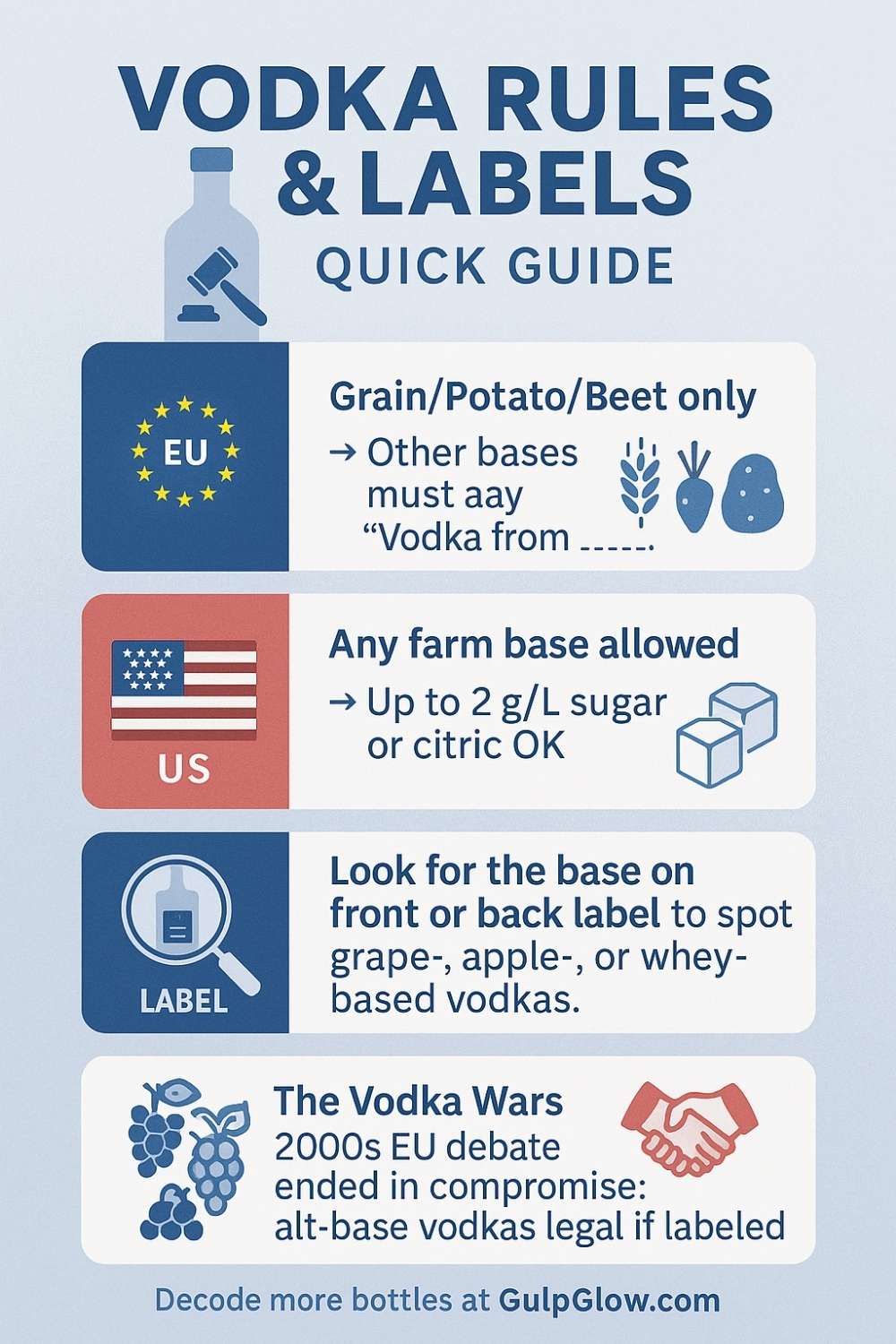
EU Vodka Laws
- Must be made from grains, potatoes, or sugar beet molasses.
- Vodkas made from other sources (like grapes) must clearly state it on the label.
- Aim is to protect traditional methods and consumer transparency.
Example: A vodka made from apples must say “Vodka produced from apples.”
US Vodka Regulations
- Far more flexible: any agricultural material is allowed.
- Vodka must be “without distinctive character,” though recent rule changes allow for more recognition of flavor nuances.
- Up to 2g/L of sugar or citric acid can be added for smoothness—without being labeled as flavored vodka.
Canadian and Other International Standards
- Canada follows a similar approach to the US, allowing broad ingredient use.
- Countries like Russia and Poland uphold strict traditions, often emphasizing specific grains or potatoes and multi-stage distillation methods.
The “Vodka Wars”
In the mid-2000s, EU producers clashed over whether vodka could be made from non-traditional sources like grapes (e.g., Cîroc). The result was a compromise: such vodkas are legal but must be labeled transparently.
This battle highlighted how vodka’s identity is still evolving—and how consumers are increasingly curious about what’s in their bottle.
Choosing the Right Vodka: Flavor, Function & Personal Preference
With so many types of vodka available—from ultra-neutral grain spirits to character-rich craft bottles—it can be hard to know which one to choose. The secret? Let the occasion and your flavor preference guide you.
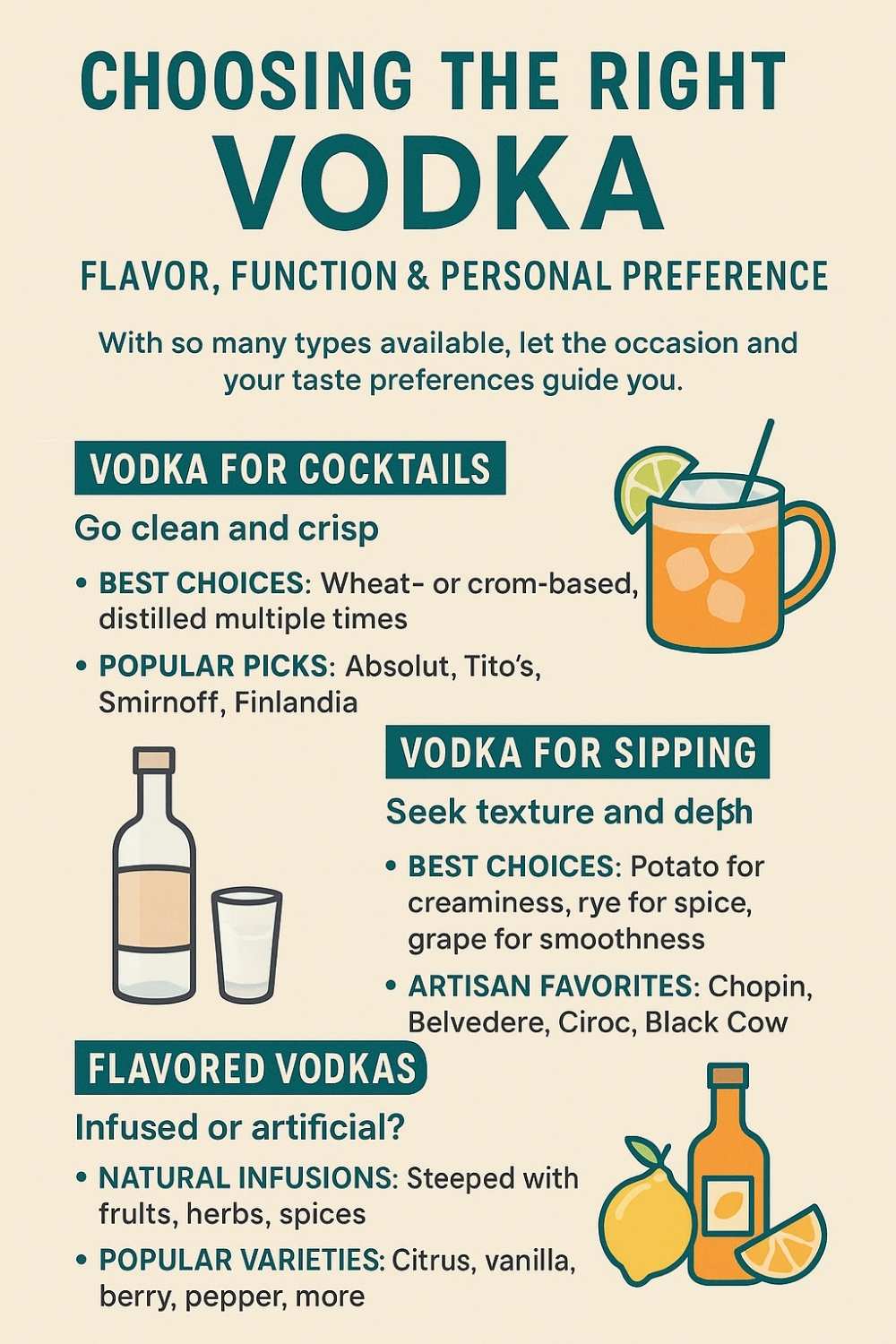
Vodka for Cocktails: Go Clean and Crisp
If you’re mixing a cocktail like a Moscow Mule, Cosmopolitan, or Bloody Mary, you want a vodka that won’t overpower the other ingredients.
- Best Choices: Wheat or corn-based vodkas, especially those distilled multiple times and heavily filtered.
- Popular Picks: Absolut, Tito’s, Smirnoff, Finlandia.
These vodkas offer smoothness and clarity that let mixers shine.
Vodka for Sipping: Seek Texture and Depth
When drinking vodka neat, on the rocks, or in a simple preparation (like vodka soda), you’ll want more nuance.
- Best Choices: Potato vodkas for creaminess; rye vodkas for spice; grape vodkas for smoothness.
- Artisan Favorites: Chopin (Potato), Belvedere (Rye), Cîroc (Grape), Black Cow (Whey).
Try chilling the bottle slightly—not ice cold—to let those delicate characteristics show.
Flavored Vodkas: Infused or Artificial?
Flavored vodkas can be naturally infused or artificially flavored. Look for:
- Natural Infusions: Often made by steeping fruits, herbs, or spices post-distillation.
- Popular Varieties: Citrus, vanilla, berry, pepper, cucumber, or even bacon!
Use them in cocktails like fruit-forward martinis or creative shots—but check labels for quality indicators (real vs. synthetic flavors).
Global Traditions & History: Vodka’s Cultural Journey
Vodka’s story stretches across centuries and continents, rooted in both tradition and transformation.
Slavic Origins: The Birth of Vodka
- Russia & Poland both claim to be vodka’s birthplace, with evidence dating back to the 8th and 9th centuries.
- Originally used for medicinal purposes, it evolved into a central element of cultural and social life.
- The word “vodka” comes from the Slavic word voda, meaning “water”—a nod to its clarity and common presence.
The Rise of Grain & Potato Vodkas
- Grain Vodka: Traditionally dominant in Russia and Northern Europe; efficient and clean.
- Potato Vodka: Emerged in the 18th century, especially in Poland and parts of Scandinavia where grains were scarce.
Industrialization & Global Expansion
- With distillation technology improving in the 19th and 20th centuries, vodka became purer and more consistent.
- Vodka hit global markets post-WWII, largely thanks to American advertising campaigns that positioned it as versatile and “odorless”—perfect for cocktails.
Craft Movement & Innovation
- In the 21st century, craft distillers have pushed vodka in new directions—experimenting with exotic bases, terroir expression, and low-intervention production.
- Consumers now seek vodkas that say something—whether it’s about the land, the distiller’s story, or the ingredient behind the bottle.
Vodka has come a long way from its rustic roots, yet still honors its legacy through both tradition and experimentation.
Conclusion & Takeaway: Vodka’s Not-So-Neutral Personality
Despite its reputation as the blank canvas of spirits, vodka is anything but boring when you take a closer look. From wheat fields in France to potato farms in Poland and maple forests in Canada, vodka reflects the land, labor, and creativity behind its creation.
Whether you’re after a crisp, clean mixer or a bold, creamy sipping spirit, the secret lies in the base ingredient and the distiller’s touch. The next time you reach for a bottle, take a moment to check the label—because what your vodka is made from might just change the way you drink it.
Cheers to exploring vodka in all its smooth, spicy, sweet, and surprisingly complex glory.
